- Radish: Tips for Growing Radishes in Your Vegetable Garden
- Choose the right radish variety
- Prepare the soil
- Plant radish seeds
- Water regularly
- Protect from pests
- Harvesting radishes
- Useful tips
- Choosing the Right Variety
- Flavor
- Size
- Color
- Shape
- Growing Conditions
- Gardening Goals
- Preparing the Soil for Radish Planting
- Here are some steps to prepare the soil for planting radishes:
- Sowing and Planting Radish Seeds
- 1. Choosing the right time
- 2. Selecting the planting spot
- 3. Preparing the soil
- 4. Sowing the seeds
- 5. Watering and thinning
- 6. Mulching
- 7. Fertilizing
- 8. Harvesting
- Watering and Fertilizing Your Radishes
- Watering
- Fertilizing
- Controlling Pests and Diseases
- 1. Flea Beetles
- 2. Root Maggots
- 3. Aphids
- 4. Downy Mildew
- 5. Powdery Mildew
- 6. Clubroot
- 7. Cabbage Maggots
- Harvesting and Storing Radishes
- Popular Radish Varieties to Try
- 1. Cherry Belle
- 2. French Breakfast
- 3. Watermelon
- 4. Daikon
- 5. Easter Egg
- Expert Tips and Advice for Successful Radish Growing
- 1. Choose the right variety
- 2. Prepare the soil
- 3. Plant at the right time
- 4. Water consistently
- 5. Protect from pests
- 6. Harvest at the right time
- 7. Enjoy fresh or store properly
- “Question-Answer”
- How long does it take for radishes to grow?
- Can radishes be grown in containers?
- Can radish seeds be saved for planting the following year?
- How do I know when radishes are ready to be harvested?
- “Video” How to Grow Full Size Radishes and Not Just Leaves: 4 Tips, Planting, Harvest & Proof
Radishes are a popular and easy-to-grow vegetable that can be a great addition to any garden. With their bright colors and crisp texture, radishes add a pop of flavor and visual interest to salads, sandwiches, and other dishes. Whether you’re a seasoned gardener or just starting out, growing radishes can be a rewarding experience.
There are many different varieties of radishes to choose from, each with its own unique flavor and characteristics. From the classic red radish to the large daikon radish, you’ll be sure to find a variety that suits your tastes and growing conditions. Some varieties, like the French Breakfast radish, have a mild and sweet flavor, while others, like the Black Spanish radish, are more peppery and pungent.
When it comes to growing radishes, there are a few key tips and tricks to keep in mind. Radishes are a cool-season crop, so they prefer to be planted in the early spring or fall when temperatures are mild. They also prefer well-drained soil that is rich in organic matter. Planting radish seeds directly into the garden bed is the easiest method, as they germinate quickly and are fast to mature. Thin the seedlings to give them enough space to grow and water regularly to ensure they stay hydrated.
Expert tip: To prevent radishes from becoming woody, harvest them when they are still small and tender. If left in the ground for too long, they can become tough and develop a strong flavor. Don’t be afraid to experiment with different varieties and planting methods to find what works best for you and your garden.
In conclusion, radishes are a versatile and rewarding vegetable to grow in your garden. With a wide range of varieties to choose from and simple planting and care instructions, radishes are a great addition to any vegetable garden. Whether you’re a beginner or an experienced gardener, radishes are sure to bring a burst of flavor and color to your meals.
Radish: Tips for Growing Radishes in Your Vegetable Garden
Choose the right radish variety
When it comes to growing radishes in your vegetable garden, it’s important to choose the right variety that suits your preferences and growing conditions. There are many different types of radishes available, such as round radishes, long radishes, and even colorful radishes. Consider factors like taste, shape, and color to determine the best radish variety for your garden.
Prepare the soil
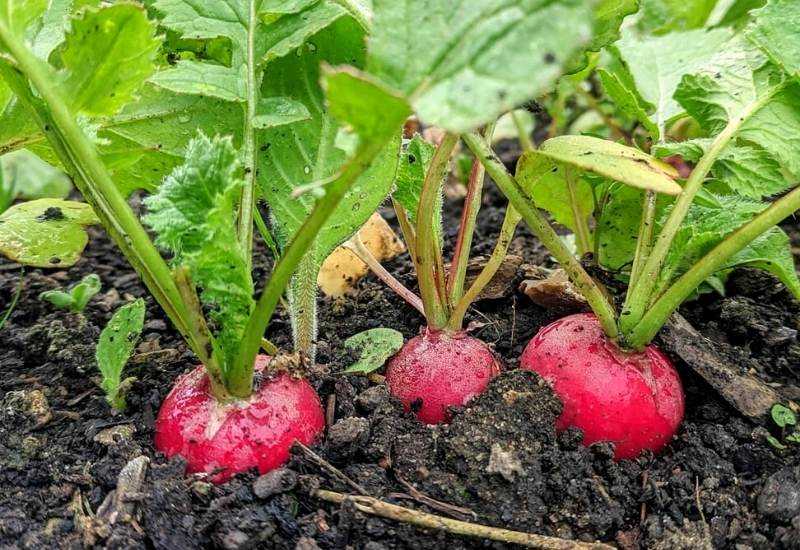
Radishes prefer a well-drained soil that is rich in organic matter. Before planting your radish seeds, make sure to prepare the soil by removing any weeds, rocks, or debris. Loosen the soil to a depth of about 6-8 inches and add compost or well-rotted manure to improve its fertility. Radishes thrive in soil with a pH level between 5.5 and 7.0, so test your soil and make adjustments if necessary.
Plant radish seeds
Radishes are fast-growing and can be sown directly in the garden. Plant the radish seeds about half an inch deep and one inch apart in rows that are 12 inches apart. If you want a continuous harvest, sow radish seeds every two weeks. Thin out the seedlings when they are about two inches tall, leaving about two inches of space between each plant.
Water regularly
Radishes need regular watering to grow successfully. Keep the soil evenly moist, especially during dry periods. However, be cautious not to overwater, as excessive moisture can lead to rotting or splitting of the radish roots. Watering once or twice a week, depending on the weather conditions, is usually sufficient.
Protect from pests
Radishes are generally not severely affected by pests, but they can still be susceptible to certain insects like flea beetles and cabbage maggots. To protect your radishes from pests, you can cover the plants with row covers or use organic pest control methods.
Harvesting radishes
Radishes are ready to be harvested within 20-30 days after sowing the seeds, depending on the variety. Harvest the radishes when they have reached the desired size. Use a garden fork or your hands to gently loosen the soil around the radish, then pull it out carefully. Radishes taste best when they are crisp and have a smooth texture.
Useful tips
- For a milder flavor, harvest radishes when they are still small.
- Radish greens are edible and can be used in salads or sautéed.
- Rotate radish crops every year to prevent diseases and pests.
- If your radishes are becoming woody or pithy, it may be due to inconsistent watering or temperatures.
By following these tips, you can grow delicious radishes in your vegetable garden and enjoy their crisp and refreshing taste.
Choosing the Right Variety
When it comes to choosing the right variety of radish to grow in your vegetable garden, there are several factors to consider. The choice of variety can depend on your preferences in terms of flavor, size, color, and shape, as well as the growing conditions and your gardening goals.
Flavor
Radishes come in a variety of flavors, ranging from mild and sweet to tangy and peppery. If you prefer a milder flavor, varieties like the French Breakfast or Cherry Belle can be a good choice. For a more peppery taste, consider planting varieties such as the Sparkler or Black Spanish.
Size
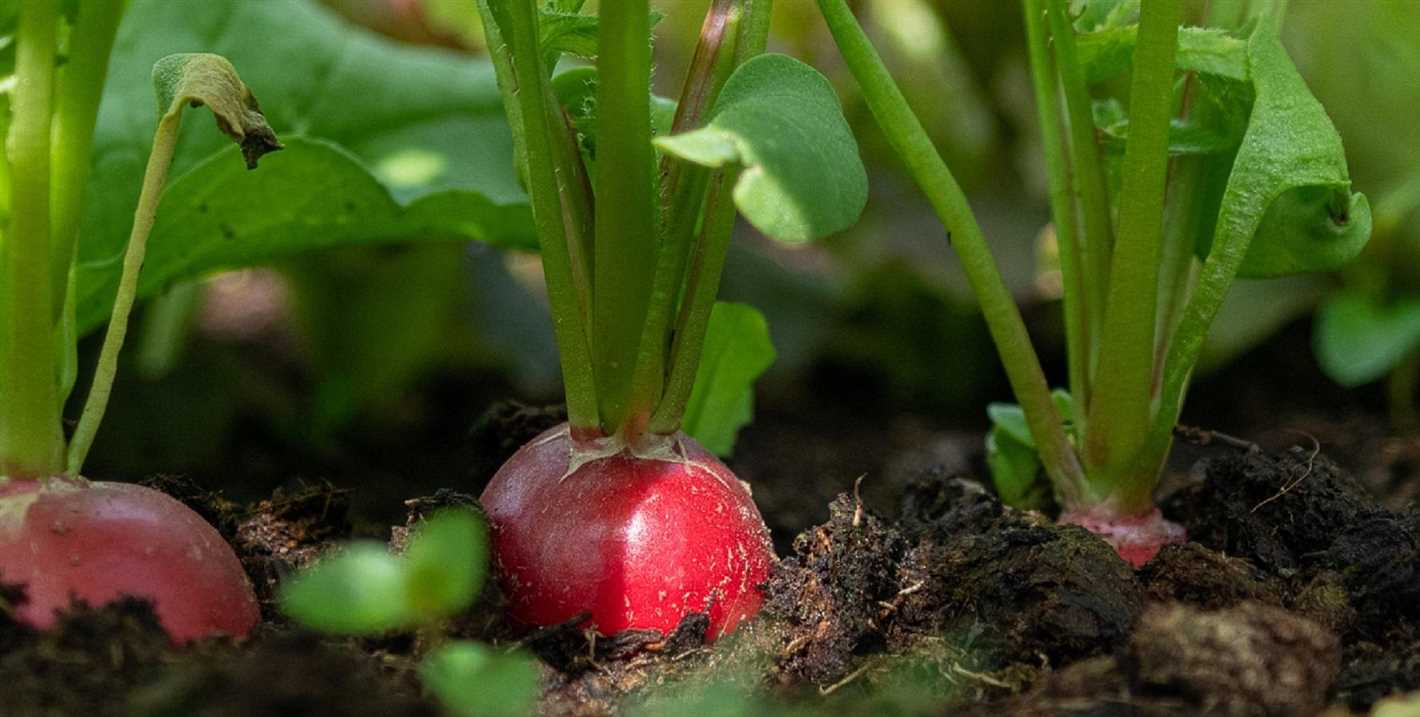
Radishes come in different sizes, from small round varieties to longer cylindrical ones. If you prefer bite-sized radishes, look for varieties like the Cherry Belle or Easter Egg. If you prefer larger radishes, varieties like the Daikon or White Icicle can be a good option.
Color
Radishes come in various colors, including red, white, pink, purple, and black. If you prefer the classic red radishes, varieties like the Scarlet Globe or Cherry Belle are popular choices. For something different, consider planting varieties like the Watermelon or Purple Plum, which have unique colors.
Shape
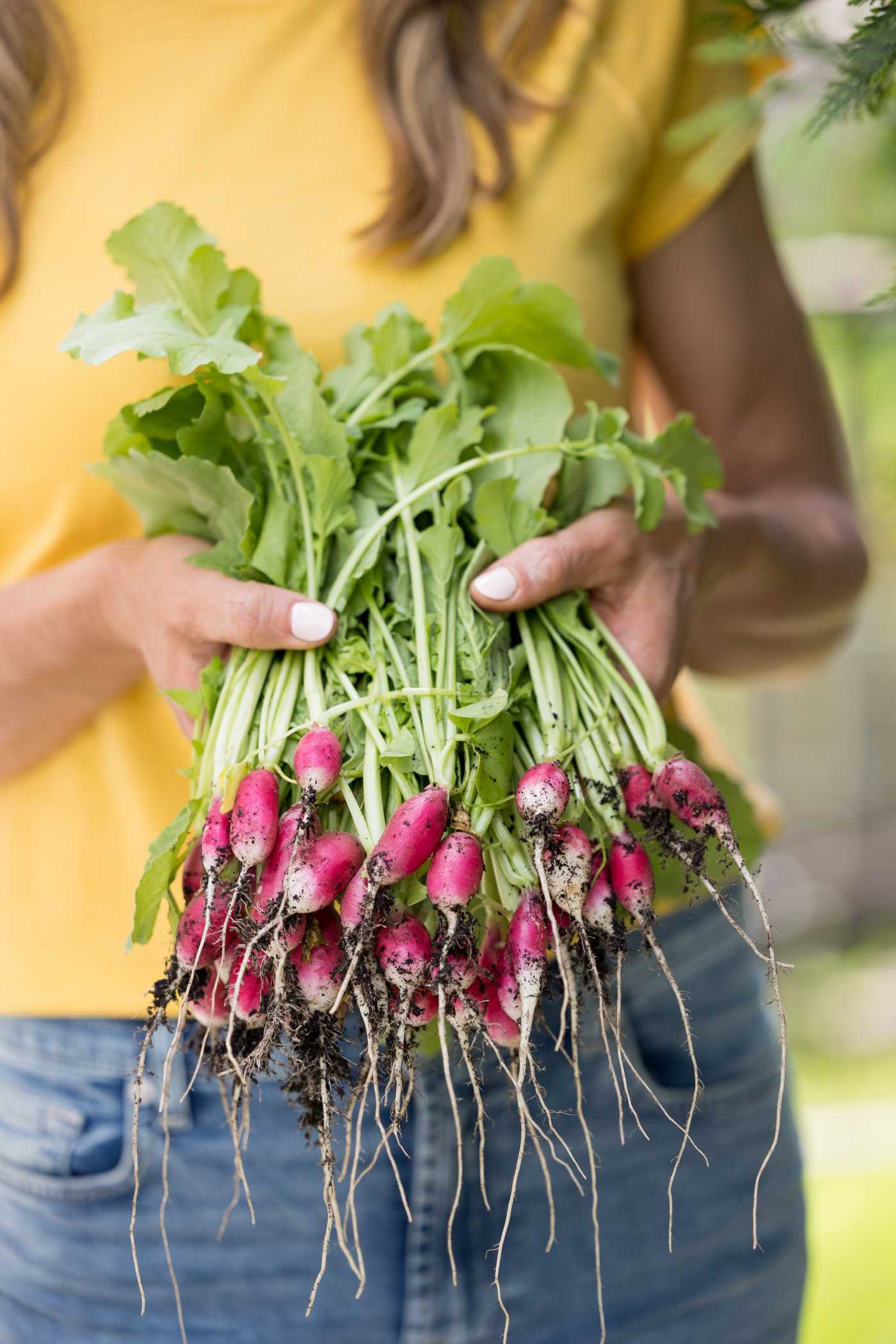
Radishes can have different shapes, from round to elongated and tapered. If you prefer round radishes, varieties like the Paris Market or Easter Egg are commonly grown. If you prefer elongated radishes, varieties like the Daikon or French Breakfast can be a good option.
Growing Conditions
Consider the growing conditions in your garden when choosing a radish variety. Some varieties are more tolerant of heat, while others are more resistant to bolting. If you have a short growing season, look for quick-maturing varieties like the Cherry Belle or Early Scarlet Globe.
Gardening Goals
Finally, consider your gardening goals when choosing a radish variety. If you are growing radishes for salads and fresh eating, look for varieties with a crisp texture. If you are interested in pickling radishes, varieties like the White Icicle or French Breakfast can be a good choice.
In conclusion, choosing the right variety of radish for your vegetable garden requires considering factors such as flavor, size, color, shape, growing conditions, and gardening goals. By taking these factors into account, you can select the perfect radish variety that suits your preferences and ensures a successful harvest.
Preparing the Soil for Radish Planting
Before planting radishes, it is important to prepare the soil to provide the best growing conditions for these root vegetables. By properly preparing the soil, you can enhance the growth and productivity of your radishes.
Here are some steps to prepare the soil for planting radishes:
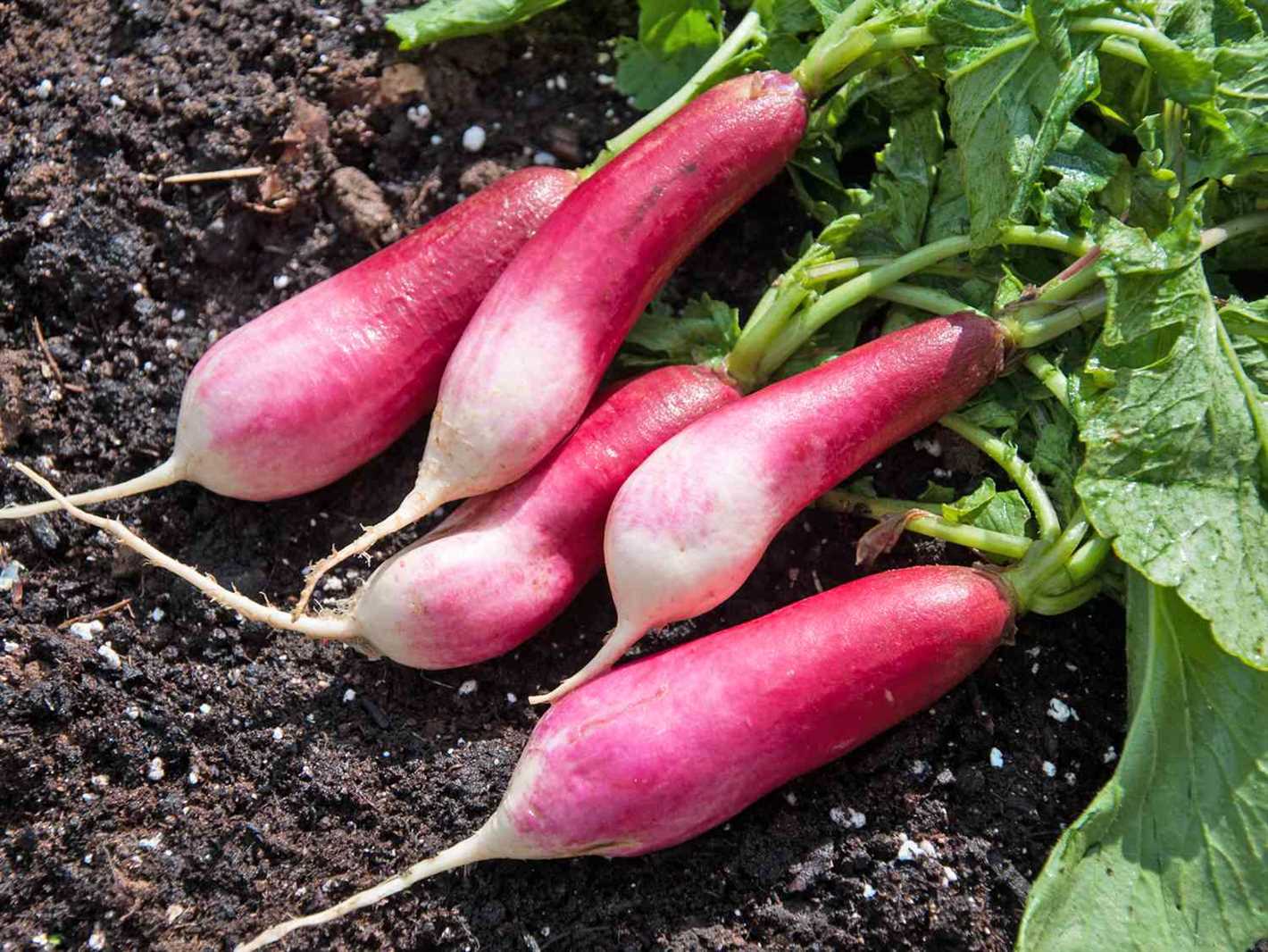
- Choose the right location: Radishes prefer a sunny location with well-drained soil. Choose a spot in your vegetable garden that receives full sunlight for at least 6 hours a day.
- Remove any weeds or grass: Thoroughly remove any weeds or grass from the planting area. These can compete with radishes for nutrients and water.
- Loosen the soil: Use a garden fork or tiller to loosen the soil to a depth of 8-10 inches. This will help the radish roots penetrate easily and allow for proper drainage.
- Add compost or organic matter: Incorporating compost or organic matter into the soil will improve its fertility and drainage. Spread a layer of compost or well-rotted manure over the planting area and mix it into the top 4-6 inches of soil.
- Test the soil pH: Radishes prefer slightly acidic soil with a pH between 6.0 and 7.0. Use a soil testing kit to determine the pH of your soil. If it is too acidic, add lime to raise the pH, or if it is too alkaline, add sulfur to lower the pH.
- Smooth and level the soil: Rake the soil to create a smooth and level surface. This will make it easier to plant the radish seeds and ensure consistent growth.
By following these steps to prepare the soil for radish planting, you can create an ideal growing environment for your radishes. This will result in healthier plants with better yields and more flavorful radishes for you to enjoy.
Sowing and Planting Radish Seeds
Radishes are easy to grow from seed and can be planted directly in the garden or in containers. Here are some expert tips for sowing and planting radish seeds:
1. Choosing the right time
Radishes are a cool-season crop and prefer temperatures between 45°F (7°C) and 85°F (29°C). They can be planted in early spring, as soon as the soil can be worked, and again in late summer for a fall harvest.
2. Selecting the planting spot
Choose a spot in your garden that receives full sun or partial shade. Radishes prefer well-drained soil with a pH level between 5.8 and 6.8. Clear away any debris and weeds from the planting area.
3. Preparing the soil
Loosen the soil to a depth of at least 8 inches (20 cm) and remove any rocks or large clumps of soil. Add organic matter like compost or well-rotted manure to improve the soil’s fertility and drainage.
4. Sowing the seeds
Sow radish seeds directly into the prepared soil. Make furrows about 0.5 inches (1.3 cm) deep and space them 1 inch (2.5 cm) apart. Place the seeds in the furrows, cover them with soil, and gently firm the soil over the seeds.
5. Watering and thinning
Water the soil gently but thoroughly after sowing the seeds. Keep the soil consistently moist until the seeds germinate, which usually takes about 4 to 7 days. Once the seedlings emerge, thin them by removing the weaker plants to provide enough space for the remaining radishes to grow.
6. Mulching
Apply a layer of straw or mulch around the seedlings to help retain moisture, suppress weed growth, and regulate soil temperature.
7. Fertilizing
If your soil is low in fertility, you can apply a balanced fertilizer to help the radishes grow. Follow the package instructions for the proper application rate.
8. Harvesting
Most radish varieties are ready for harvest in 20 to 30 days. You can start harvesting as soon as the radishes reach the desired size. Carefully pull them out of the soil, and if you plan to store them, remove the leaves and store them in the refrigerator.
Following these sowing and planting tips will help you grow a successful crop of radishes in your vegetable garden or containers.
Watering and Fertilizing Your Radishes
To ensure that your radishes grow healthy and produce the best harvest, it is important to provide them with adequate water and nutrients. Here are some tips on watering and fertilizing your radishes:
Watering
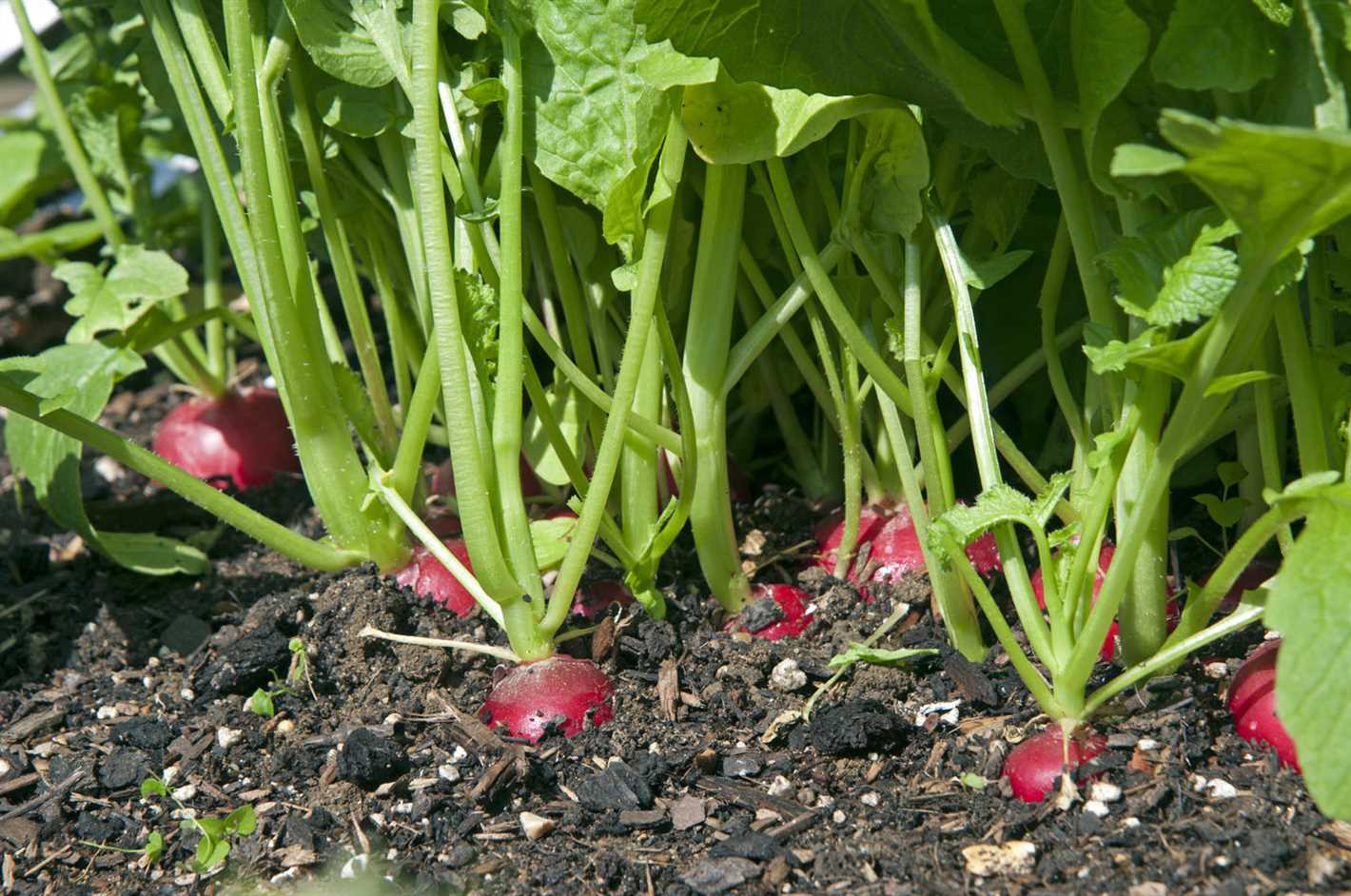
- Radishes require consistent moisture for optimal growth. The soil should be kept evenly moist, but not waterlogged.
- Water your radishes deeply, providing enough moisture to reach the root zone. Shallow watering can lead to stunted growth and poor root development.
- Check the moisture level of the soil regularly. Stick your finger about an inch into the soil – if it feels dry, it’s time to water.
- The frequency of watering will depend on the weather conditions and the stage of radish growth. Generally, radishes need about 1 inch of water per week.
- Consider using drip irrigation or a soaker hose to provide a slow and steady water supply that directly targets the root zone.
Fertilizing
- Radishes are generally light feeders, but they still benefit from a balanced fertilizer.
- Before planting, incorporate a slow-release fertilizer into the soil according to the package instructions.
- Too much nitrogen can result in lush foliage growth and small, woody radishes, so choose a fertilizer with a balanced NPK ratio.
- If you notice slow growth or pale leaves, you can apply a liquid fertilizer high in phosphorus to encourage root development.
- Avoid over-fertilization, as it can lead to excessive leaf growth at the expense of radish roots.
By providing your radishes with proper watering and fertilization, you can ensure that they grow vigorously and produce delicious, healthy radishes for your enjoyment.
Controlling Pests and Diseases
Pests and diseases can wreak havoc on radish plants if not managed properly. Here are some common pests and diseases that can affect radishes and ways to control them:
1. Flea Beetles
- These tiny black beetles can chew small holes in the radish leaves and stunt the plant’s growth.
- Control measures include using row covers or applying organic insecticides containing neem oil or diatomaceous earth.
2. Root Maggots
- Root maggots are small white maggots that feed on the radish roots, causing them to become discolored and rotten.
- To prevent root maggots, cover the radish plants with row covers and avoid planting radishes in the same area year after year.
3. Aphids
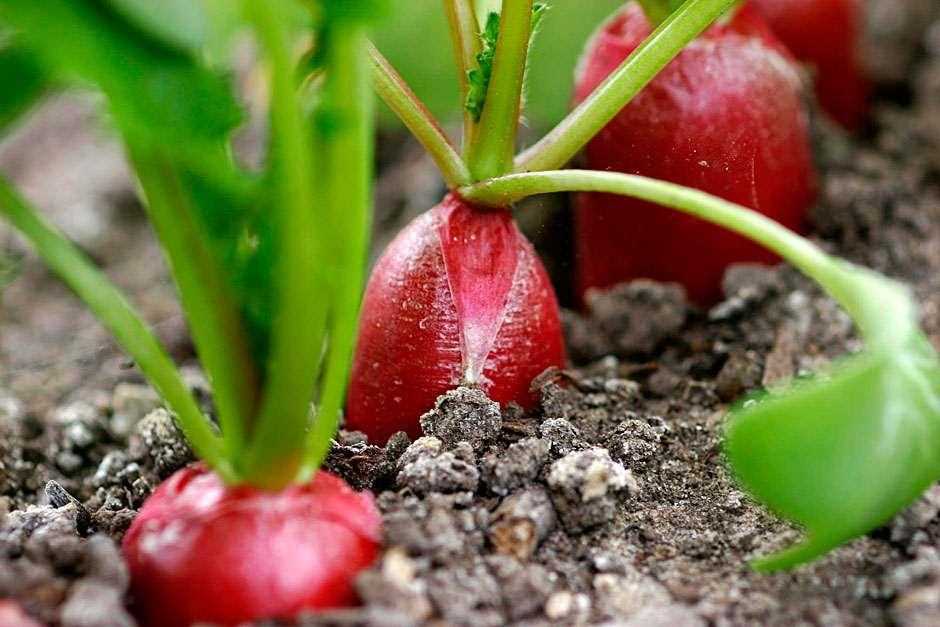
- Aphids are small soft-bodied insects that can cause curling of radish leaves and transmit plant diseases.
- To control aphids, spray the radish plants with a strong stream of water to dislodge them or use insecticidal soap.
4. Downy Mildew
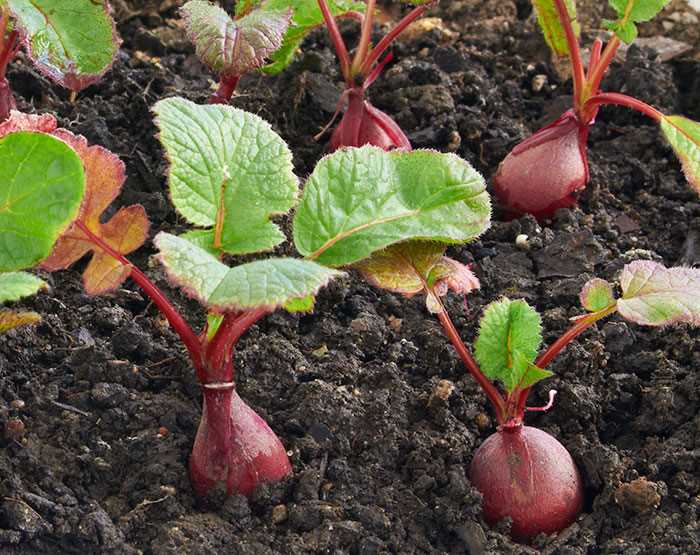
- Downy mildew is a fungal disease that causes yellowing and wilting of radish leaves.
- To control downy mildew, ensure proper spacing between plants, apply appropriate fungicides, and avoid overwatering.
5. Powdery Mildew
- Powdery mildew appears as a white, powdery coating on the leaves and can stunt radish growth.
- To prevent powdery mildew, provide adequate air circulation, water the radish plants at the base, and apply fungicides if necessary.
6. Clubroot
- Clubroot is a soil-borne disease that causes swelling and distortion of radish roots.
- Prevent clubroot by practicing crop rotation and avoiding acidic soil conditions.
7. Cabbage Maggots
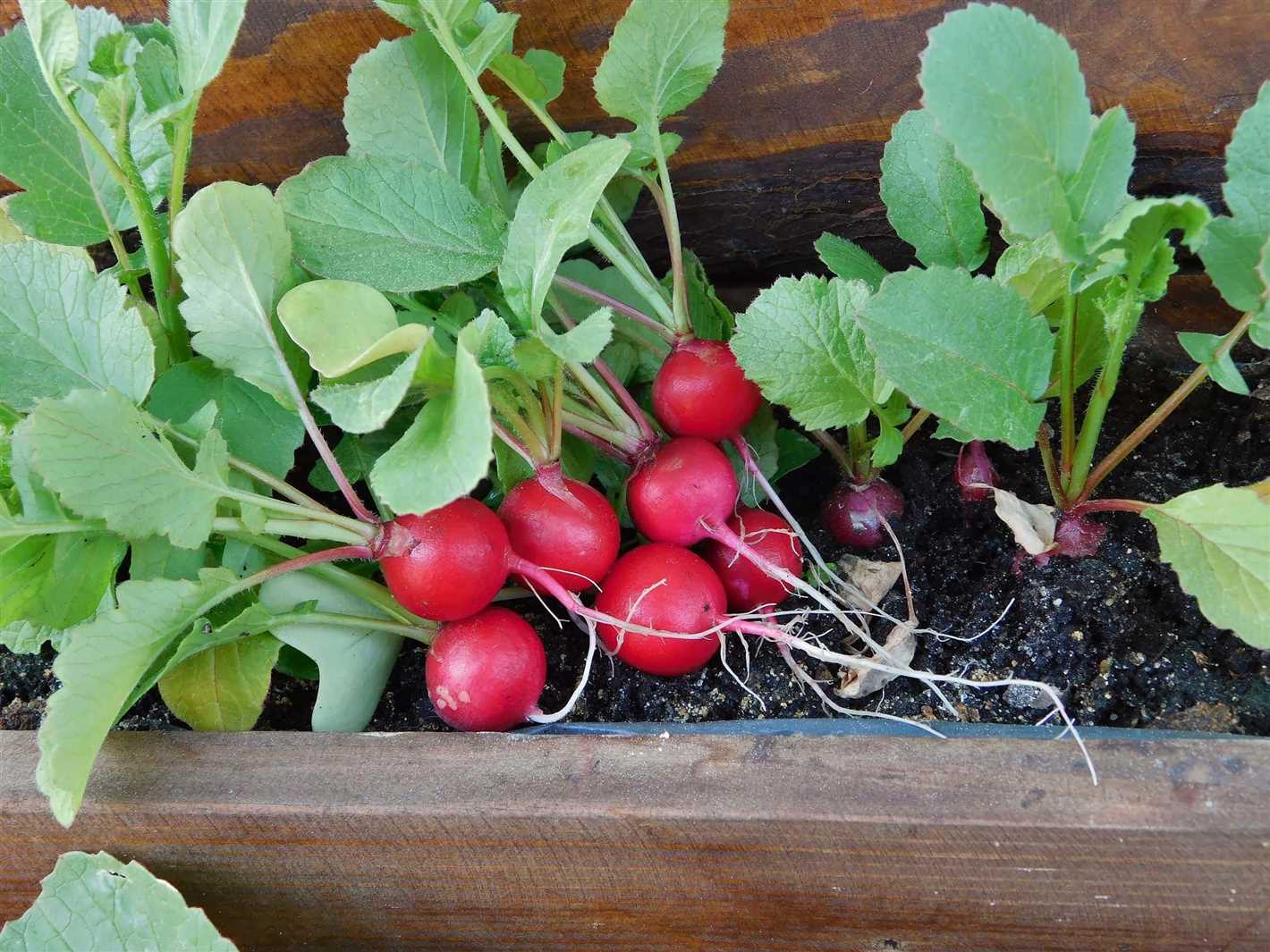
- Cabbage maggots are small white maggots that feed on the radish roots, causing poor root development.
- To control cabbage maggots, use row covers, avoid planting radishes near other brassicas, and till the soil in fall to expose overwintering pupae to freezing temperatures.
By implementing these control measures and maintaining a healthy growing environment, you can minimize the damage caused by pests and diseases and enjoy a bountiful harvest of radishes.
Harvesting and Storing Radishes
Radishes are ready for harvest when they have reached their mature size. This usually takes about 3-4 weeks from sowing. You can check the size of the radishes by gently pulling one out of the ground and inspecting it.
To harvest radishes, simply grab the foliage at the base of the plant and gently pull upwards. The radish should come out easily, with the foliage attached. If the foliage separates from the radish, it may indicate that the radish is not fully matured, or that it has been left in the ground for too long.
Once harvested, remove the foliage from the radishes. To store radishes, trim off the roots and wash the radishes thoroughly to remove any dirt. It is important to store radishes in a cool and moist environment to maintain their freshness.
One storage option is to refrigerate the radishes. Place the cleaned radishes in a plastic bag, and make sure to remove as much air as possible before sealing it. Radishes can be stored in the refrigerator for up to two weeks.
Another option is to store the radishes in a container filled with sand or sawdust. This method helps to maintain the radishes’ moisture level and prevents them from drying out. Make sure to store the container in a cool and dark place, such as a cellar or root cellar.
Radishes can also be pickled or fermented to extend their shelf life. Simply slice the radishes and place them in a jar with a pickling liquid or brine. Store the jar in the refrigerator and enjoy the pickled radishes for several weeks.
When storing radishes, it is important to regularly check for any signs of spoilage, such as mold or softness. Remove any spoiled radishes immediately to prevent them from affecting the others.
Popular Radish Varieties to Try
Radishes come in a variety of shapes, sizes, and colors, making them a versatile and attractive addition to any vegetable garden. Here are some popular radish varieties that you should consider trying:
1. Cherry Belle
Cherry Belle radishes are a classic and popular choice among gardeners. They have a round shape and a bright red skin, with a crisp and mild flavor. These radishes mature quickly, usually in about 3 weeks, making them perfect for gardeners who want a fast-growing crop.
2. French Breakfast
French Breakfast radishes are known for their elongated shape and unique coloration. They have a bright red top and a white tip, creating a striking visual contrast. These radishes have a slightly spicy flavor and a tender texture. French Breakfast radishes are typically ready to harvest in about 3 to 4 weeks.
3. Watermelon
Watermelon radishes are named for their striking pinkish-red flesh that resembles the inside of a watermelon. They have a green skin and a mild, sweet flavor. Watermelon radishes take a bit longer to mature, usually around 6 to 8 weeks, but their unique appearance and taste make them well worth the wait.
4. Daikon
Daikon radishes are a popular choice in Asian cuisine. They have a long, cylindrical shape and a white skin. Daikon radishes have a milder flavor compared to other radish varieties, making them a great addition to salads, stir-fries, and pickling. These radishes typically take around 4 to 8 weeks to mature.
5. Easter Egg
Easter Egg radishes are known for their vibrant and varied colors. They come in shades of pink, purple, red, and white, adding a playful touch to any dish. Easter Egg radishes have a mild and slightly spicy flavor. These radishes are usually ready to harvest in about 3 to 4 weeks.
No matter which radish varieties you choose to grow, you’ll be rewarded with a crop that is not only delicious but also visually appealing. Experiment with different varieties to find your favorites!
Expert Tips and Advice for Successful Radish Growing
1. Choose the right variety
When selecting radish varieties for your garden, consider factors such as flavor, size, shape, and growing conditions. Some popular varieties include Cherry Belle, French Breakfast, and Sparkler. Choose a variety that suits your preferences and the climate of your region.
2. Prepare the soil
Radishes prefer well-drained, loose soil. Before planting, amend the soil with organic matter such as compost or aged manure to improve its fertility and drainage. Remove any rocks, roots, or debris that may hinder the growth of the radishes.
3. Plant at the right time
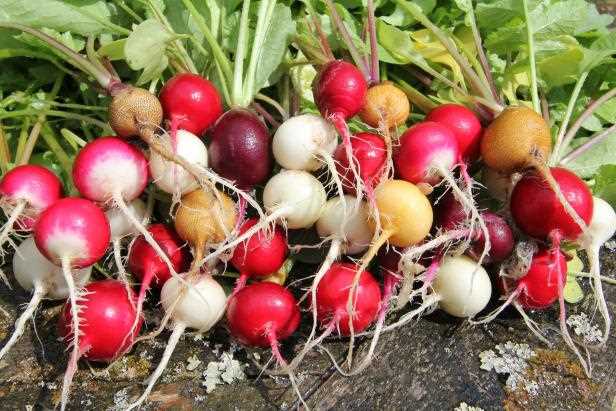
Radishes are cool-season crops that tolerate frost, so they can be planted early in spring or late in summer for a fall crop. Plant the seeds directly in the garden as soon as the soil can be worked. Make sure to provide adequate spacing between the seeds or thin the seedlings later to allow room for growth.
4. Water consistently
Keep the soil evenly moist throughout the growing season to ensure proper radish development. Water the plants deeply but avoid overwatering, as this can lead to rotting. Mulching around the plants can help retain moisture and suppress weeds.
5. Protect from pests
Radishes are generally less prone to pest infestation compared to other vegetables. However, you may still encounter pests like slugs, flea beetles, or aphids. Monitor your plants regularly and take appropriate measures, such as using row covers or organic pest control methods, if necessary.
6. Harvest at the right time
Most radishes are ready for harvest within 20 to 30 days after sowing. The size and shape of the radish will vary depending on the variety. Radishes are best when they reach their mature size but before they become too large and pithy. Gently pull the radishes out of the ground, taking care not to damage the roots.
7. Enjoy fresh or store properly
Radishes are delicious when eaten fresh, either on their own or in salads. If you have a surplus, you can store radishes in the refrigerator for a few weeks. Remove the leaves and place the radishes in a plastic bag with holes for ventilation. Properly stored radishes can retain their freshness and taste for an extended period.
By following these expert tips and advice, you can successfully grow radishes in your vegetable garden and enjoy a bountiful harvest!
“Question-Answer”
How long does it take for radishes to grow?
Radishes typically take about 3 to 4 weeks to reach maturity from the time of planting. However, some varieties may mature even faster, in as little as 3 weeks. The exact time will depend on the variety and growing conditions.
Can radishes be grown in containers?
Yes, radishes can be successfully grown in containers. Choose a container that is at least 6 inches deep to accommodate the radish roots. Fill the container with well-draining potting mix and sow the radish seeds according to the package instructions. Place the container in a sunny location and water regularly to keep the soil moist. Harvest the radishes when they are mature.
Can radish seeds be saved for planting the following year?
Yes, radish seeds can be saved for planting the following year. Allow some radish plants to bolt and produce flowers. The flowers will then form seed pods containing the radish seeds. Allow the seed pods to dry on the plant until they turn brown and then harvest them. Store the radish seeds in a cool, dry place until you are ready to plant them.
How do I know when radishes are ready to be harvested?
Radishes are generally ready to be harvested when they have reached the desired size. This will depend on the variety, but most radishes are ready to be harvested when they are around 1 inch in diameter. Gently pull up a radish and check the size before harvesting the rest of the crop. If the radish seems difficult to pull up or if the tops are pushing out of the ground, it may be overripe and woody in texture.







